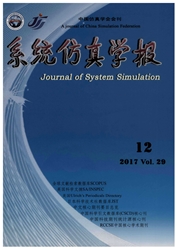

 中文摘要:
中文摘要:
群体疏散正日益变得频繁。为了有助于学者与业界应用和研究群体疏散,研究基于当前最新最全的成果,将用于群体疏散的主要数字仿真方法进行整理归纳。通过比较分析认为:元胞自动机模型及格子气模型在时空方面都是离散的,具有很高的计算效率;社会力模型及流体动力学模型在时空方面都是连续的,前者适合描述复杂的群体行为,后者适合描述高密度的群体行为;与前四种模型相比,基于agent模型计算效率最低,但它很容易模拟不同类型的个体(或群体)。基于现有这些仿真方法的研究成果,未来的研究趋势将着眼于多种仿真方法的组合应用,并在仿真中充分考虑个体差异特性。尤其是在模型中增加行人的社会心理因素和基于agent的仿真,将是今后描述疏散群体复杂行为的一种主流方法。
 英文摘要:
英文摘要:
Crowd evacuation is a common phenomenon in modem society. To help model researchers study crowd evacuation and promote model application, the numeral simulation approaches of crowd evacuation was summarized systemically based on the current research results. After comparison and analysis of these approaches, it is argued that: Cellular automata models and lattice-gas models are both discrete in space and time, and they can achieve a high computational efficiency. Social force models are good at describing the complex behaviours, and fluid dynamic models do well in depicting the dense behaviors of a crowd. They are both continuous in space and time. Agent-based models have a lower computational efficiency than the above four kinds of models, but they can model heterogeneous humans easily. Based on the current research results of different simulation approaches, a new trend highlights a need to combine various approaches to study crowd evacuation. Furthermore, researchers should consider the pedestrians as heterogeneous individuals or groups in their models. Especially, some social psychological elements reflecting pedestrian characteristics should be added in the models, and in future, agent-based simulation will be a main approach that describes complicated behaviors during crowd evacuation.
 同期刊论文项目
同期刊论文项目
 同项目期刊论文
同项目期刊论文
 期刊信息
期刊信息
